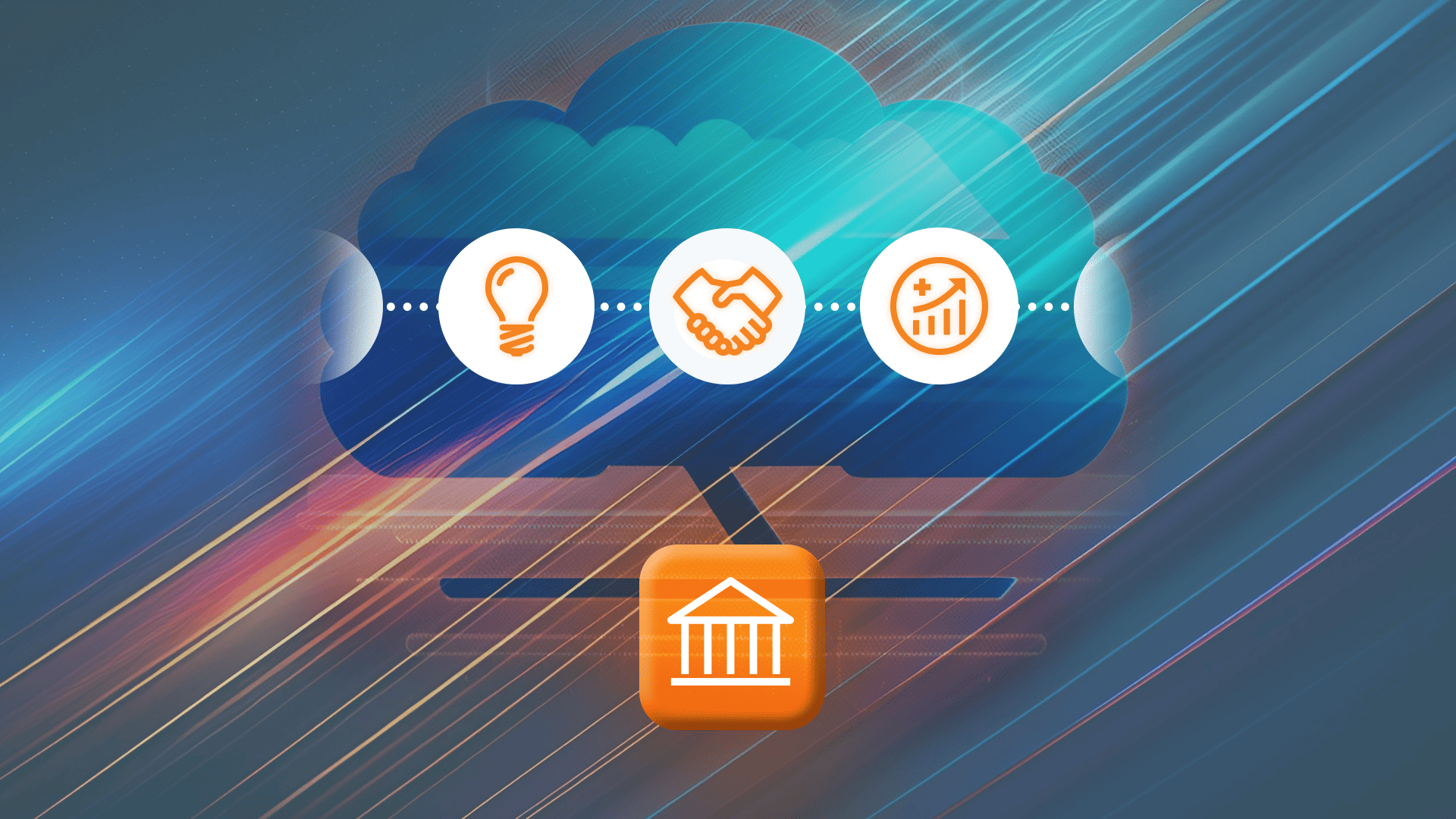Let’s be frank: honesty and telecom billing are like yogurts and communism — an oxymoron in many markets (even the developed ones). Specifically, we’re talking here about hidden charges in telecom. They’re a bit like predatory lending: the ones doing it know it’s terrible, and the ones paying the price know it too. But here we are in almost 2023, with billions of dollars turning over year-to-year in this industry. And just like with predatory lending, telcos sometimes need to deploy those tricky hidden charges when the new year is approaching and their revenue projections are not where they need to be.
The ongoing “crackdown on junk fees” has been under President Biden’s control since this autumn. In this new war on unfair pricing and corrupt financial institutions, telecom billing and charging fees will likely become collateral damage. So, in light of this, how can you protect your business? And what role has PortaOne been playing in making telecoms more transparent and honest? (A role that, as a matter of fact, we’ve been playing since the 2000s.) Read today’s story, and you’ll find out.
Vonage Gets Punished for Obstructing Their Cancellation Procedure
We’ve covered Vonage in this blog before (in our CPaaS story, to be specific). It’s a big, successful business that’s now owned by Ericsson as a part of the Swedish telecom giant’s effort to beef up its CPaaS/UCaaS offerings. Recently, the FTC forced Vonage to deal with a series of complaints from its customers, who claimed the company’s cancellation procedure was unfair. Vonage now has to pay $100M to settle the case.
Generally, here was the problem: many of the plans offered by Vonage kicked off with a “free trial.” After that free trial expired, Vonage would start auto-charging those customers until they took action to cancel. And, hell, Vonage made very sure that their the cancellation process was challenging to navigate – or even to understand. Any customer who wanted to cancel first had to get through to a live “retention agent” on the phone. That conversation was a bit like one of those good old arcade games – you know the ones where you have to face the main villain at the end of a level? Even if you could defeat that “villain” and successfully cancel your plan, though, Vonage would then present you with the prospect of paying an “early termination fee.”
AT&T Data Throttling
Vonage is not the only company to face the FTC due to predatory revenue practices. In 2014, the FTC sued AT&T for “data throttling,” a method known in Europe as “applying a data shape to a customer’s traffic.” What happens is that a telco will apply reduced speed to a customer on an “unlimited” data plan after that customer reaches a certain usage point. To put it another way, data throttling is like a “reverse” form of hidden charges in telecom. It goes like this: A telco advertises “unlimited” data to its customers. Then that telco punishes its customers for using that “unlimited” data. In the AT&T example, the case came to completion in 2019, with AT&T being required to pay $60M to resolve the allegations.
There are many other cases (and even a Quora feed) involving “greed in telecom.” To get right to the origins of this problem, let’s put the situation into a historical perspective. It starts in the early 2000s, when the PortaOne team first got exposed to the world of hidden telecom fees while we were supplying a VoIP billing system for prepaid calling cards.
Greed, Pricing Wars, and “Revenue Recovering Fees”
The first phone calling cards appeared in Italy in 1976 as a response to a national coin shortage. We were curious about the explanation for this mysterious coin shortage, obviously, and so we tried to find it… and, surprisingly, it turns out that many numismatics experts trace the cause to Japanese garment makers, who were using the 50 and 100 lira coins as buttons! 🧵🪡
Regardless of the cause, the outcome of that shortage was miniassegni, or “mini-checks” — in other words, promissory notes produced to replace the use of coins. Various businesses, including cafes and grocery shops, used these miniassegni. At some point, local telecoms noticed, and got an idea for how to use the concept for their telephone booths. Here’s some context for today’s hipsters and millennials: back in these ancient times, “telephone booths” were little huts with actual wire-connect calling machines inside them.
The Rise of Hidden Telco Charges
By the 1980s, the Italian idea of calling cards was spreading all over the world. The idea may have started out as merely a fancy, one-off concept, but a few C-suite executives started to recognize them as a product with huge revenue potential. And so, by some point in the 1990s, calling cards were turning the entire international calling industry upside down.
The cutting edge of calling cards basically came down to price differentiation. Some calling card providers claimed they could offer users 200 minutes of calling for just $15. (For context, the mainstream US telecom providers were charging between $1 and $5 for each minute of talking.) Other businesses soon upped the stakes, advertising 500 minutes for $15.
So, how do you make a profit within this wild discounting competition? In fact, here’s how: you do it by using hidden charges.
Regulators Intervene
At some point, obviously, regulators had to intervene. (There’s a great example of this from the 🇯🇲Jamaican FTC.) As a result, many “calling card innovators” got punished. Then the mainstream telecom adjusted their pricing. Then came the Skype and Google Talk revolution. Then things settled down for over a decade.
PortaBilling — The Bad Cop
PortaBilling, because of its open architecture and advanced formulas for programming call charging, became the ultimate tool for imposing those sneaky fees on prepaid card users. If a telco wanted to apply fees randomly to a certain percentage of their users or calls, PortaBilling, as it turns out, would allow them do that. As a result, consumers needed to “reverse engineer” the algorithm if they wanted to understand whether or not they were being overcharged – something they couldn’t do without help. Sure, all of this may have been a clear manifestation of the superb capabilities of our software and engineering team, but it still wasn’t exactly something we would want to brag about to our friends and family at the dinner table. 😬
Today, we are so happy that we can look back and know that other features our team developed eventually won this battle. These new features focused on providing an honest and reliable service that would help telcos retain their customers. Now, when young engineers come to our training centers, most of them have difficulty understanding the concept of prepaid cards and why those “hidden fees” were even required.
🇦🇺🦘An Honest Partnership Wins in the Long Term
Lawsuits and regulatory response don’t have to be the only solution – and, in fact, they aren’t. Human beings have a natural need for honest, trustworthy connection to others. Take Australia, which was colonized by the British as they forcefully sent criminals there over a period of centuries. Today, it is a safe place to live and conduct business. We once had a customer in Australia who originally came to that country from Ghana to start a career as a mine worker and later progressed to running a telecom. He was responsible for reinventing Australia’s long-distance-call industry back in the early 2000s. Unbeknownst to us, he had used PortaSwitch, local pay-as-you-go SIM cards, and GSM gateways to become the “king of Australian international call traffic termination pirates.”
The major Australian CSPs tried to counter Amadu’s shady business by bolstering their anti-fraud and revenue assurance departments. This “termination game” cost millions of dollars in lost profits, manufacturing costs of blocked SIM cards, HR, and legal fees. At some point, Amadu collected all the blocked SIM cards he had used in recent months and sent a massive box of them to the revenue assurance department of a major Australian telco, offering a truce and a deal: he would establish a direct connection with them, allowing them to send their voice calls at a reasonable price. On his end, he would be able to re-sell to international carriers. He ended up being quite a successful provider of wholesale international VoIP minutes after that.
Types of Hidden Charges in Telecom
We’ve talked a lot so far about the advent of hidden charging – so, by this point, you might be wondering what form those charges actually take. Here’s a quick breakdown:
Government Fees
This category of fees is mostly a situation when a telco tries to shift the burden of regulatory expenses to the end customer. A formidable article by Rob Webber for Forbes provides a detailed analysis of the various “government” fees passed on by the Big Four major US national telcos: Verizon Wireless, AT&T, T-Mobile, and Sprint.
“Administrative” and Other Telco-Imposed Charges
A report by Consumer Reports highlights a particular category of cable company charges that TechDirt calls “bullshit fees.” Among many others, there’s a “Broadcast TV Fee,” a “Regional Sports Fee,” an “Installation fee,” and even an “HD Technology Fee.” According to the report, the US cable industry made at least $28B in 2019 alone due to these various telco-imposed charges.
“Deterrent fees”
Vonage’s early cancellation fee that we described above is a vivid example of deterrent fees. And, as with the case of Vonage, deterrent fees are very likely to get the telco in trouble with the regulators. The best solution would be to design your business model and customer journey so that you don’t need to punish your customers for their actions. A little later in this story (in “The Telco Perspective” section) we will explain our ideas on how you can achieve this solution.
Hidden Charges Strike Back
Apparently, the telecom industry made a big circle, and has once again reached a point where hidden charges are seen as a last remaining solution to stay profitable. The abundance of SIP trunking and cloud PBX services on the market and the inability of providers of these services to differentiate on things other than price has created a situation where operators sometimes apply something very, very similar to those tricky, “good old” calling card fees – but now they are being applied to the customer’s invoice disguised as taxes or government-imposed fees.
Avoiding Hidden Charges: The End Customer’s Perspective
That Forbes article offers advice for telco customers on how to minimize their bill. To summarize their tips: it’s (1) combing your bill, (2) negotiating with the telco, and (3) enrolling in autopay. BTW, our CEO figured out how to save on his T-Mobile bill after reading the draft of this article. Hopefully, that will eventually pay back the investment he made in creating it.
If you want to find more details on all three of these tips, here’s a little direction:
- FTC provides some good “bill combing” ideas on its website.
- Don’t be afraid of negotiating. You’re just making those “Vonage retention agents” do their job. Negotiation is always better than confrontation.
- Autopay will save you $5 to $10 in the US (depending on your telco). Located outside of the US? We wouldn’t be surprised if you’re feeling inspired to inquire with your local “retention agent” and tell them about this article you’ve read. 😉
The Telco Perspective: How to Get to the Bright Side
So, without further ado: how does PortaOne help the telcos and other service providers we serve?
We make it easy and profitable to go clean. Dishonesty is just delaying failure — if you can’t provide a service without cheating, likely, you will not continue servicing that customer over the long term. The solution is to know your customer better and create new products (with a better profit margin) that suit them. Here are two excellent inspiration cases from our customers to help you do just that:
Inventing SMS Bundles for Hosted PBX
Redworks, our customer from The Netherlands, is ready to share their experience.
Selling IoT Jump-start Kits on Top of M2M SIM Cards
Alex Rot-Serov, sales manager at PortaOne, explains the IoT Mill by PortaOne.
Other Great Cases
- We can help you sell vertically integrated solutions. For example, our customer CloudCall integrates telephony into CRM and then sells it in bundles.
- We can help you work with developers. Sell pre-integrated packages so they can incorporate your products into their mobile apps. An example here is PortaPhone and its API. We created this product in partnership with a Ukrainian startup named WebTrit.
- We enable the use of shared knowledge. We want to organize periodic telco workshops for our customers to exchange their ideas (for non-competing markets).
- We offer an unlimited PortaSwitch license – and we encourage you to lean into that “unlimited” promise. Update regularly to get early access to our newest features, and launch “zero CAPEX” products based on the code (and a ready-to-use tool) you have already purchased.
Fighting on All Fronts
BTW: Speaking of honesty. Sorry for a war-induced PTSD paragraph. It’s unrelated to hidden charges in telecom. However, it’s still essential. (Undear at all) Mr. putin, if you think you can bomb us into submission, you are gravely wrong. You can kill my unit commander (and two other dudes at other times). You can (not really) destroy our power plants, medical emergency rooms, and maternity wards. You can continue waging your war of terror against our elderly, mothers, sisters, and children. But you will lose.
Cyborg Valeriy Krasnian "Bars" has defended Ukraine during the first russian invasion, incl fought for Donetsk airport. After the big war started returned from abroad to repel russian aggression again. Was KIA today. Lest we forget
— Olena Halushka (@OlenaHalushka) November 24, 2022
Source: @suspilne_news pic.twitter.com/1eHnRMMHlT
We shall fight you on the beaches. We shall fight on the landing grounds. We shall fight in the fields and the streets. We shall fight you in our Slack channels and Zoom conferences. We shall fight you in our git repositories and documentation portal. We shall fight you via Microsoft Teams integrations for PBX and our cloud call centers. We shall fight you with our sales meetings and inbound marketing. We shall fight you from the trenches, bunkers, morgues, and catafalques, writing WordPress posts next to our fallen friends. But we will never surrender. And you will — eventually, and without any doubt. Dishonesty is just prolonging the failure.











